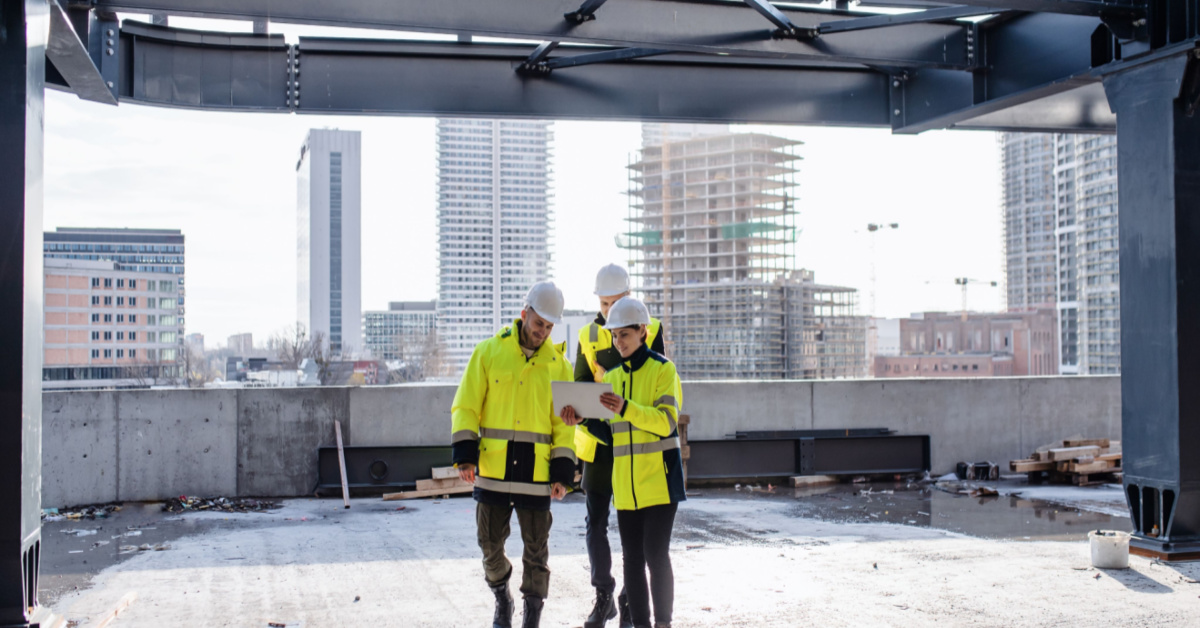While there has been some slight moderation in the pace of total jobs creation in the United States so far this year, there really has not been any letup in the additions to construction sector payrolls.
U.S. total employment in June, according to the latest monthly report from the Bureau of Labor Statistics (BLS), advanced by 206,000 jobs, but that result comes with a yellow flag. May’s figure on total number of positions has just been revised down by 111,000 jobs, meaning June’s advance was really a little under +100,000 jobs from what it was believed to be prior.
The monthly average of total jobs creation in the U.S. through the first half of the current year has been +222,000, comparing less favorably with the +289,000 average from January to June of last year.
The construction sector’s record of jobs creation has been more buoyant. June’s seasonally adjusted increase was +27,000 jobs. The average monthly gain in construction positions through June of this year has been +21,000 jobs, exactly matching the result during the same time frame in 2023.
Construction’s not seasonally adjusted (NSA) unemployment rate has dropped to a near historically low 3.3%, improving on May’s 3.9% and June 2023’s 3.6%. (The national ‘all jobs’ unemployment rate in June was 4.3% NSA and 4.1% SA.)
It’s rare for construction’s unemployment rate to fall so close to manufacturing’s comparable figure, which in June was 3.1% NSA.
Another indication of construction’s ongoing labor market strength is to be found in the latest earnings growth. Wage increases for all jobs, including supervisory personnel, in June were +3.9% year over year hourly and +3.6% weekly. Construction workers had more reason to smile with earnings gains of +4.9% hourly and +5.7% weekly.
For production workers alone (i.e., leaving out bosses), again there was an advantage to being in construction. The y/y ‘all jobs’ wage advances were +4.0% hourly and +3.7% weekly, whereas the climbs in construction earnings were +4.5% hourly and +5.6% weekly.
For production workers on their own (i.e., not including bosses), the hourly rate paid to construction personnel in June was nearly one-fifth (18.6%) higher than for ‘all jobs’. At a granular level, the premium paid hourly to construction versus manufacturing workers was +28.2%.
Clearly, from a compensation standpoint, a career in construction holds much appeal.
Nor have openings in construction, as calculated through the monthly JOLTS (Job Openings and Labor Turnover) Survey, tailed off much. As of the latest three-month moving average in May of this year, the level of openings was down by less than 1.0% relative to the March-May average in 2023.
The total number of U.S. construction jobs is now +2.9% year over year, placing it behind only ‘health care and social assistance’ (+4.8%) for fastest jobs growth among all major sectors.
Within overall construction activity, nonresidential building is accounting for the speediest jobs growth, +5.2% y/y, with engineering performing quite decently as well, +3.6%. Those two sub-categories have benefitted from exceptional financial stimulus provided by government spending packages in IIJA, IRA, and Chips and Science Bill legislation.
Furthermore, there is currently an expanded role being played by ultra-large (i.e., mega-sized at a billion dollars or more each) construction projects, which are built over extended timelines. Robust ‘starts’ statistics of the past couple of years are being carried forward into the put-in-place numbers as the economy moves fairly aggressively down the road.
May’s put-in-place construction figures show total year-to-date spending of +8.8% compared with January-May 2023, powered by both nonresidential building, +9.5%, and residential (on top of significant weakness last year), +7.9%.
As the Federal Reserve contemplates when to initiate a retreat in peak interest rates, it closely monitors two primary indicators. There must be signals that inflation as a problem is waning. That has come to pass with June’s Consumer Price Index (CPI). For the first time since before the pandemic, the month-to-month change in prices leaned more towards declines than increases.
Second, the overheating in the jobs market must be seen as easing. On that front, the ‘all jobs’ picture is moving in the right (i.e., moderating) direction. The same, however, in all honesty, can’t truly be said yet for the construction sector.
Get the monthly Construction Economy Snapshot for a construction employment update, starts data, regional starts, and analysis.
About ConstructConnect
Construction Starts Here™ at ConstructConnect, where our mission is to help the construction industry start every project on a solid foundation. A leading provider of software solutions for the preconstruction industry, ConstructConnect empowers commercial construction firms to streamline their workflows and maximize productivity. ConstructConnect operates as a business unit of Roper Technologies (Nasdaq: ROP), a constituent of the Nasdaq 100, S&P 500, and Fortune 1000.
